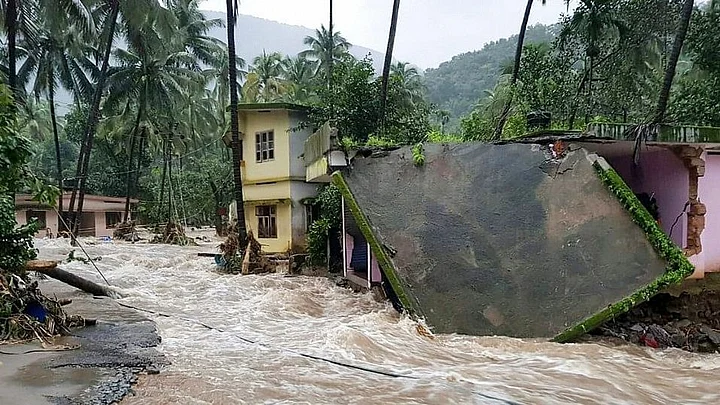Five districts of Kerala are on 'red' alert as heavy rainfall continues to wreak havoc in the state under the influence of low-pressure areas forming in the Arabian Sea and the Bay of Bengal.
Seven other districts are on 'orange' alert where 'heavy to very heavy rainfall' is predicted, while eleven districts have been issued a 'yellow' alert.
At least 24 people lost their lives as more bodies were recovered in Kottayam and Idukki during the search operations that are underway in the state, which is severely affected by the floods and landslides.
What are red, orange, and yellow alerts? Here is everything you need to know.
What are these colour-coded alerts?
According to the India Meteorological Department (IMD), "colour codes are used in weather warnings for bringing out the severity of the weather phenomena expected".
These warnings are meant to caution government officials and disaster management authority to be prepared with ample resources and planning to tackle the forthcoming weather disaster.
What does each colour mean?
Here is what colour-coded alert stands for, as per Free Press Journal:
Red [Take Action]: It indicates severely bad weather, which can pose risk to life, and can disrupt travel and power supply.
Orange [Be Prepared]: It is issued for extremely bad weather, which may cause risk to people and property.
Yellow [Be Updated]: It is used to indicate the potential impact of the upcoming weather event.
Green [No Warning]: No advisory issued.
How are these warnings determined?
According to Firstpost, the colours assigned to a weather situation are decided by IMD under a five-day forecast scheme.
The assessment regarding the colour code for "impact-based" warning includes meteorological factors, hydrological factors, geophysical factors among others, which may interact with each other to determine the risk and impact.
Do the warnings mean the same everywhere?
According to IMD, despite the colour-code criteria being the same for all centers, the sub-divisional warning might not be the same, as the given criteria is general in nature. This might, therefore, differ from state to state.
Are these alerts only for rainfall?
The alerts are universal in nature and are not specifically used for rainfall or landslides, but for a range of natural calamities, including cyclones, snowstorms, tsunamis, and other natural disasters.
(At The Quint, we question everything. Play an active role in shaping our journalism by becoming a member today.)
